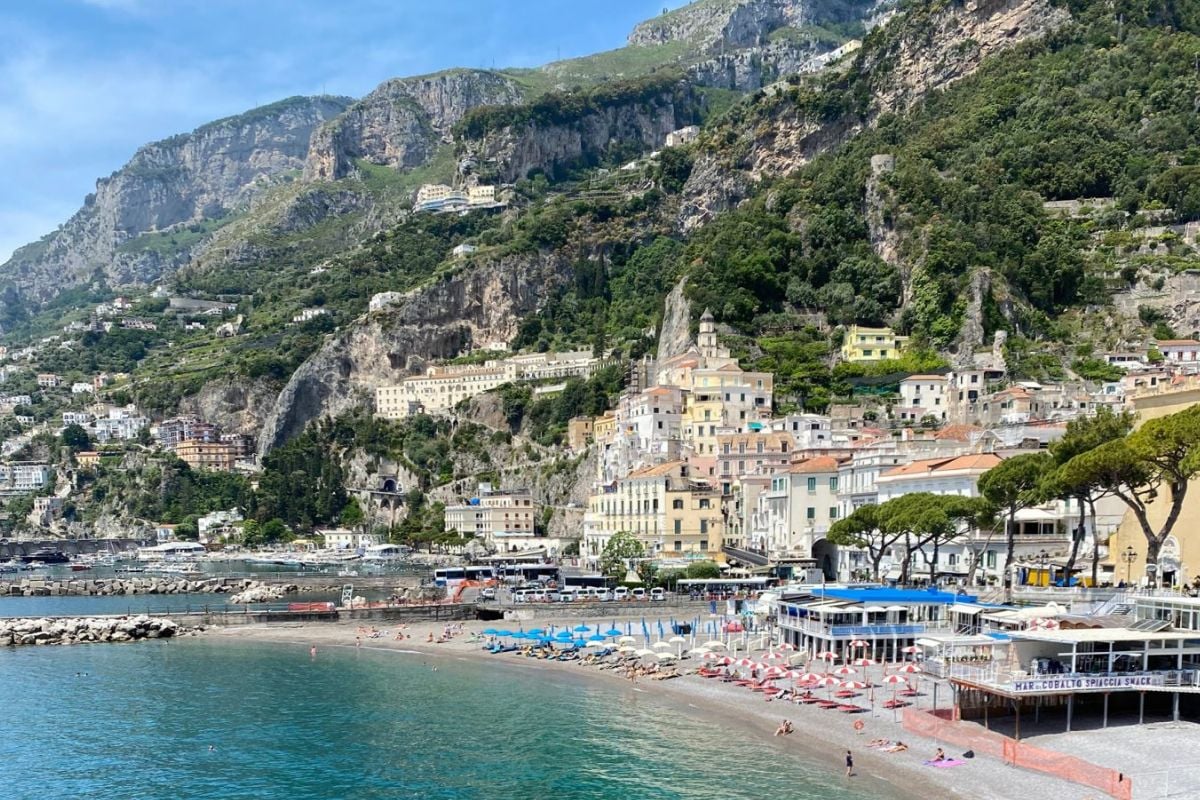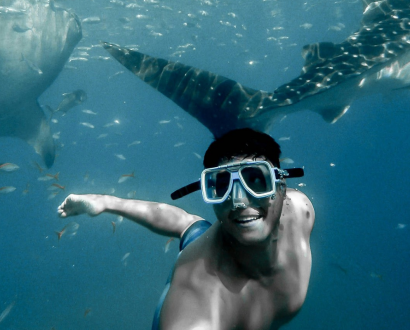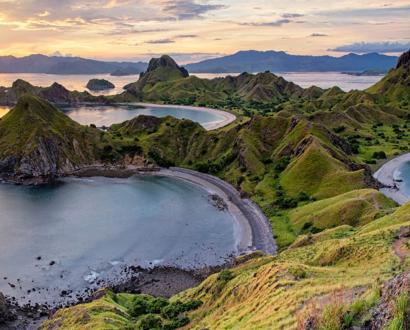A favorite moment on the island of Capri occurs purely by chance in the upper village of Anacapri, just as spring teeters on the edge of the summer tourism crescendo.
Taking an unscripted detour on the way to Villa San Michele leads not to one of Italy’s most famous villas, but serendipitously to an innocuous leafy side street.
Dogs bark, chickens squawk and washing flaps behind lush rough-and-tumble hedges.
The clogged, glamour-soaked Capri Town, with its narrow streets and designer bag toting clientele, seems a world away. Could I still be on Capri?
Even on well-padded popular paths, taking tiny deviations yields large rewards.
That’s the thing with the Amalfi Coast, stretching from Sorrento in the north to Salerno in the south, including islands lying within the Bay of Naples embrace. Even on well-padded popular paths, taking tiny deviations yields large rewards.
Sensory supernovas await discovery, from the visual feast of Amalfi’s neon lemons and fuchsia bougainvillea to saturated flavors grown in Conca Dei Marini’s sunburnt terroir and salt-soaked skin post dips in the water by tiny Atrani.
But any trip to the Amalfi Coast starts with the gateway of Naples. Town planners were remiss in adding any green spaces, resulting in Europe’s most densely populated city.
It’s excitingly unpredictable, energetic, dynamic, sexy and gritty all rolled into one meatball (a Neapolitan specialty).
Play a game of archaeological snap, sighting 2,000-year-old ovens in nearby Pompeii, then the actual petrified loaves in the outstanding Naples National Archaeological Museum.
Discovering the tunnels
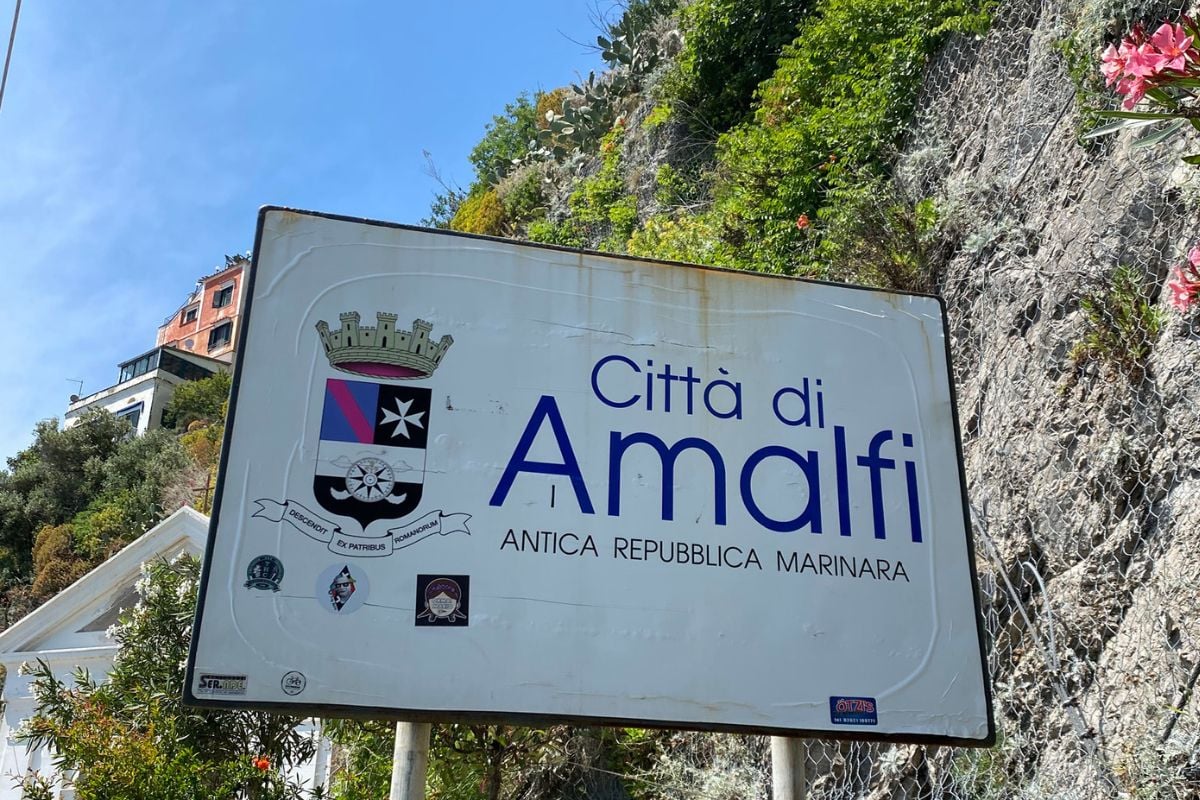
For the real Naples, however, you need to head underground. The city straddles soft tufo stone, tunneled like Swiss cheese and home to underground aqueducts and Roman theaters.
But lesser known and visited is the atmospheric Bourbon Tunnel, offering a walk past ancient cisterns and bomb shelters, featuring quotidian detritus from dolls to diaries and even a Fiat Cinquecento.
A 50-minute ferry ride and a world away, Capri, a Roman Emperor favorite for both beauty and bounty, also sports two sides.
As the Hotel Caesar Augustus concierge explains, “This island is a Gemini. There is the conosciuto (the known), and if you like Michelin star restaurants, we have them. But if you like the sconosciuto (unknown), local rustic meals or incredible hiking, we have that, too.”
But sconosciuto-seekers beware, there’s one requisite – time.
Plenty of options
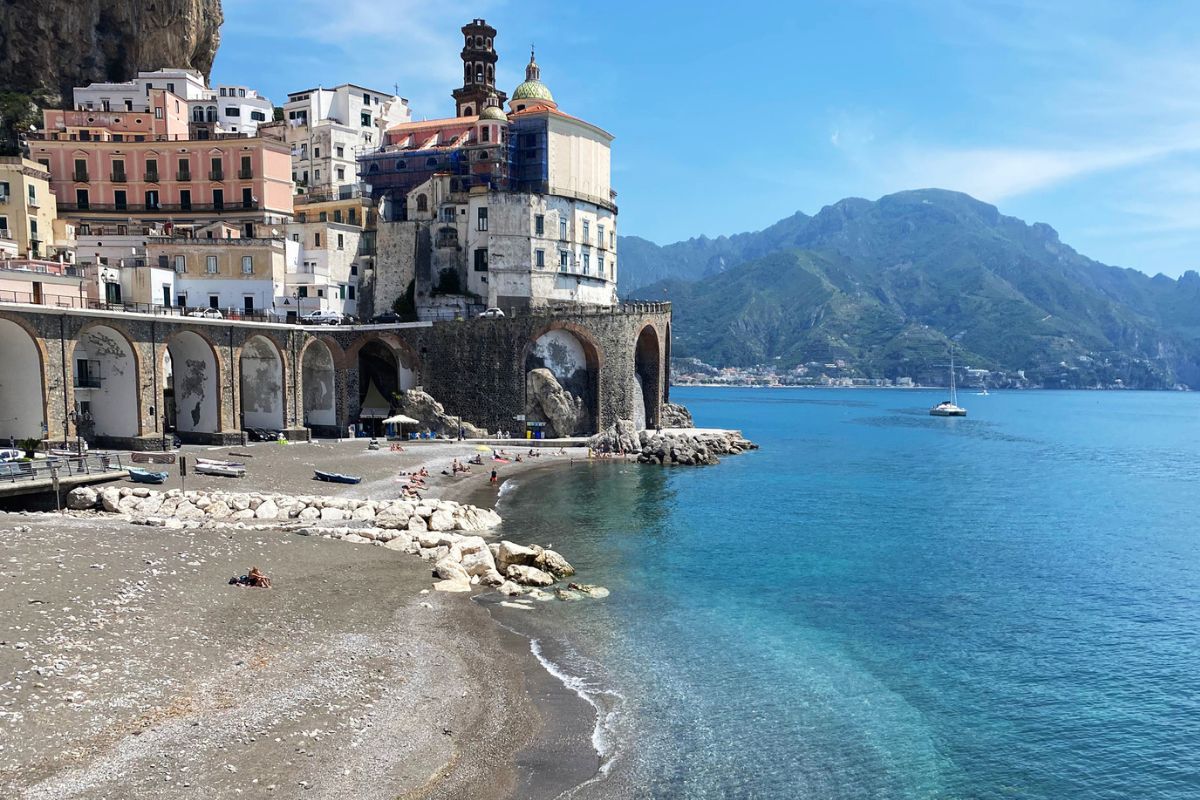
Port logistics thwart day trippers’ grand plans. Want to sun worship at the jet-set chic Fontelina Beach Club? It involves a funicular (cable railway) and a 30-minute walk or private boat.
Keen to explore the hights of Anacapri? It’s another 30-minute bus ride. When a destination is reached, it’s time to return, perhaps only having experienced the human stew among the catwalk of Hermes, Dior, Prada and Missoni stores.
So pause a while. If keen on Capri Town – but minus the bustle – a shortcut to living like a local is staying at the chic oasis of La Minerva with pool and emerald lawns, family owned for 100 years.
But climb the 600-plus Phoenician Steps – the sole lifeline that once tethered the fishermen of Capri Town and the farmers of Anacapri – and another world awaits. Especially if staying at Hotel Caesar Augustus.
By day, sun glares on a sapphire-blue ocean, while at dusk a violet chiffon curtain descends, lights flickering like fireflies on distant shores.
This is a hotel that can only be described as pure Capri, from the gaily yellow and white striped awnings bordered in roses to a personal greeting by Francesco, son of the owner.
“This isn’t a hotel, this is our home. We still live here, we know the island intimately,” Francesco says as he welcomes us onto the terrace, arguably boasting the most jaw-dropping view on the island.
The panorama sweeps from the island of Ischia to Naples, with the port a mere speck at 300 meters below. By day, sun glares on a sapphire-blue ocean, while at dusk a violet chiffon curtain descends, lights flickering like fireflies on distant shores.
So while Beyoncé dines at Aurora, Francesco points us to the farmhouse of da Gelsomina, where we eat paddock-to-plate before wandering in the adjacent Parco Filosofico, which features quotes by more than 60 philosophers.
And while la Fontelina buzzes, we follow islanders to the Lido del Faro beach club and restaurant in the wilder south west.
At the Villa San Michele, the 3,200-year-old Sphinx and award-winning gardens dazzle, but the secret star is the garden’s produce in the villa’s little-known Cafe Casa Oliv.
Exploring Positano
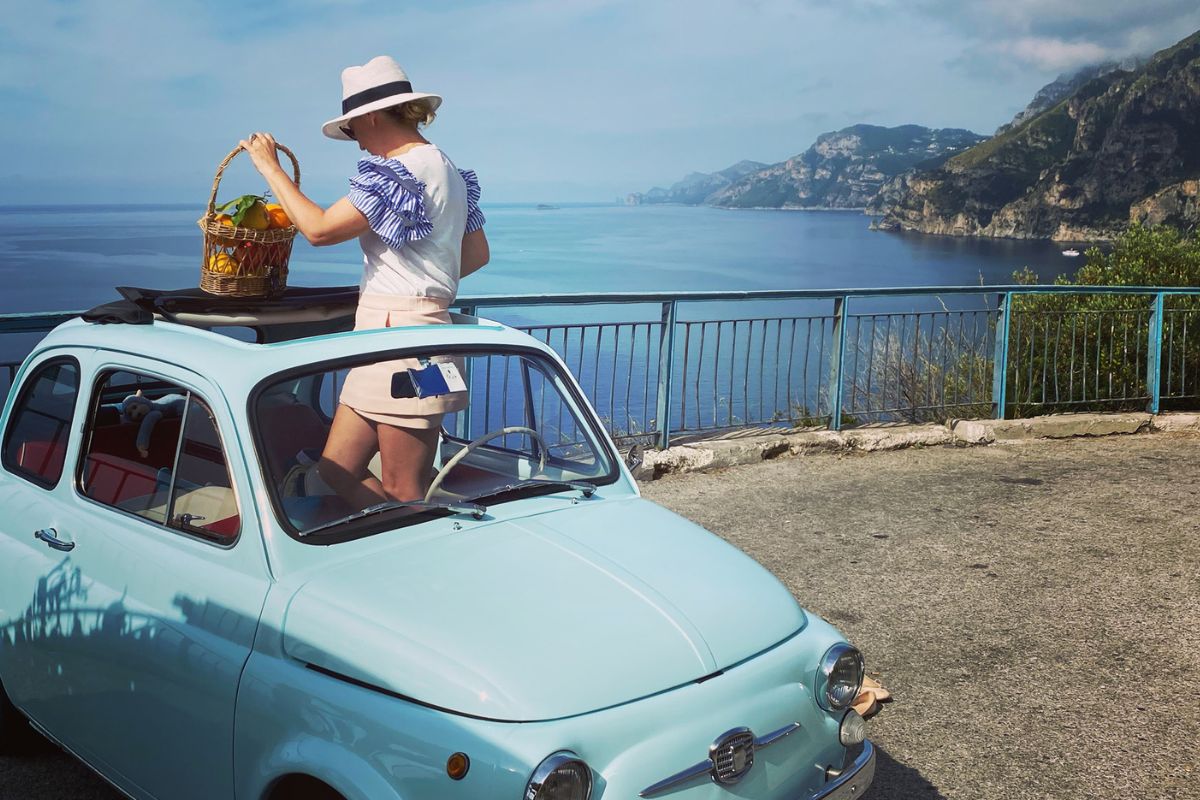
Pause on Capri, but not at the expense of taking the 30-minute ferry to Positano to stay on the Amalfi Coast. Nothing prepares for the swoon-worthy sight of this town with all the visual impact of a can-can-dancing showgirl.
It’s love at first sight, as dramatic cliffs rear from the Tyrrhenian Sea and gelato-hued houses dribble down into a cone of sandy beach – move over Capri, Positano’s just entered the room and is poised to perform.
The charm offensive starts in historical Palazzo Murat, home to a former King of Naples.
If Positano is New York, its expansive grounds with pool (and stellar restaurant) are the location equivalent of Manhattan.
If Positano is New York, its expansive grounds with pool (and stellar restaurant) are the location equivalent of Manhattan, featuring vegetable gardens, walls dripping with jasmine, roses, grapefruit and Meyer lemons.
You could dine at bustling beach front Chez Black like Denzel Washington, but for the best pizza south of Naples, head to Lo Guarracino tucked above neighboring Fornillo Beach.
When ready to explore further, a few hairpin curves away is Praiano, the knot of pathways sporting painted majolica tiles dedicated to San Gennaro, the patron saint of Naples. But what you’re really here for is Il Pirata.
The cliff embedded setting is spectacular, but with its still-flapping fresh fish and warm hospitality, the misnamed restaurant and beach club is ruining the reputation of bloodthirsty, thieving pirates everywhere.
Il Pirata is no secret, rather a must-do, as is their signature tonino e patate (tuna and potato) dish. But few know they have just one hotel room above the restaurant, where the lucky can roll onto the sunniest beach on the Amalfi Coast (most fall into shadow by afternoon), and are within a fork-toss of the kind of food you’ll return for.
Walk of the Gods
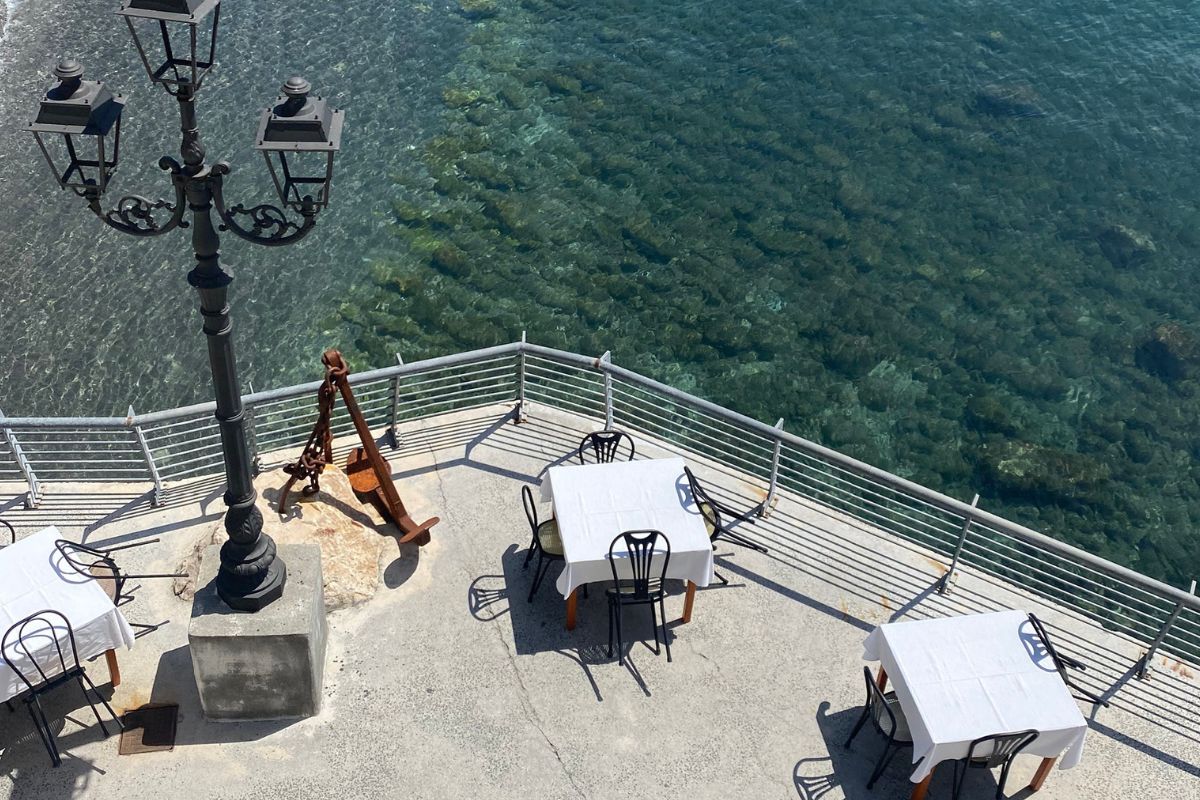
Also a piece of sconosciuto gold is exiting the Walk of the Gods hike at Praiano instead of continuing to Positano.
By using a seldom-accessed path skirting the 12th century Santa Maria a Castro church in a field of wildflowers, a descent of around 1,000 steps leads directly to Giorgio, the Il Pirata’s owner who will have your post-hike waterside table and burrata (soft cheese) waiting. Seamless.
Unlike with Il Pirata, the Walk of the Gods is no misnomer. The seven-kilometer traverse between the villages of Bomerano and Nocelle weaves precipitously 500 meters above the Mediterranean, the scenery an Amalfi pastiche of dramatic natural landscapes and postcard-perfect villages.
Just when you think you’ve seen it all, the Amalfi hits a cymbal clash at composer Richard Wagner’s preferred perch, Ravello, above Amalfi.
More angelic hikes abound, one of the Amalfi’s lesser-known circuits is the Valle del Sambuco near Minori, circumnavigating lemon groves, paper mill ruins and a 13th-century convent, perched atop the coastline and cloaked by pine and oak trees.
Just when you think you’ve seen it all, the Amalfi hits a cymbal clash at composer Richard Wagner’s preferred perch, Ravello, above Amalfi.
From this 350-meter-high cliff top aerie, the views of the Bay of Salerno are pure drama. But the ambience is total tranquillity; it’s easy to imagine violins plucking while you stroll Villa Rufolo’s gardens or drink in the panorama of Villa Cimbrone’s Terrace of Infinity.
Discover the water
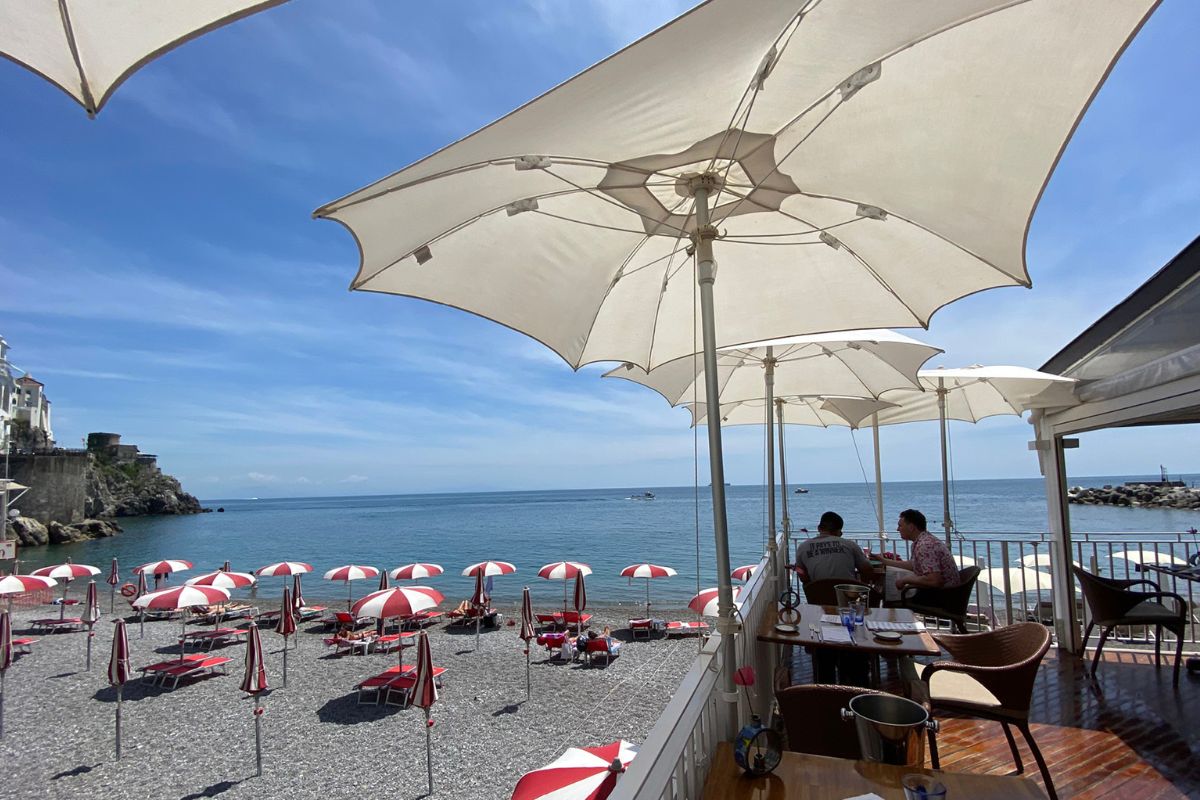
Like with Capri, don’t day-trip. Partly, as you’d miss staying at Palazzo Avino. There are other grand hotel contenders for a bucket-list stay, but the 12th century Palazzo Avino, run by two sisters, is the epitome in modern chic.
Waft into the in-house The Pink Closet boutique curated by Mariella Avino, the lobster and champagne bar or their guest-only Clubhouse By The Sea, accessed via hotel shuttle.
Where you’ll find the essence of the Amalfi Coast is on the water, buffeted by a balmy breeze.
But where you’ll find the essence of the Amalfi Coast is on the water, buffeted by a balmy breeze like fishermen for millennia.
Australian-Italian chef Valerio Fantinelli organizes trips aboard a fishing boat with a father-and-son team. If you’re lucky enough to snag a local sea bass or gilt-head brim, it’s cooked onboard for lunch while you listen to generations of stories.
Hooking niche experiences like Fantinelli’s brand new fish-tastic adventure takes some active searching, so hold close an appropriate expression as bait to help keep you on the discovery track: “Chi dorme non piglia pesce”. (He who sleeps, won’t catch fish.)

